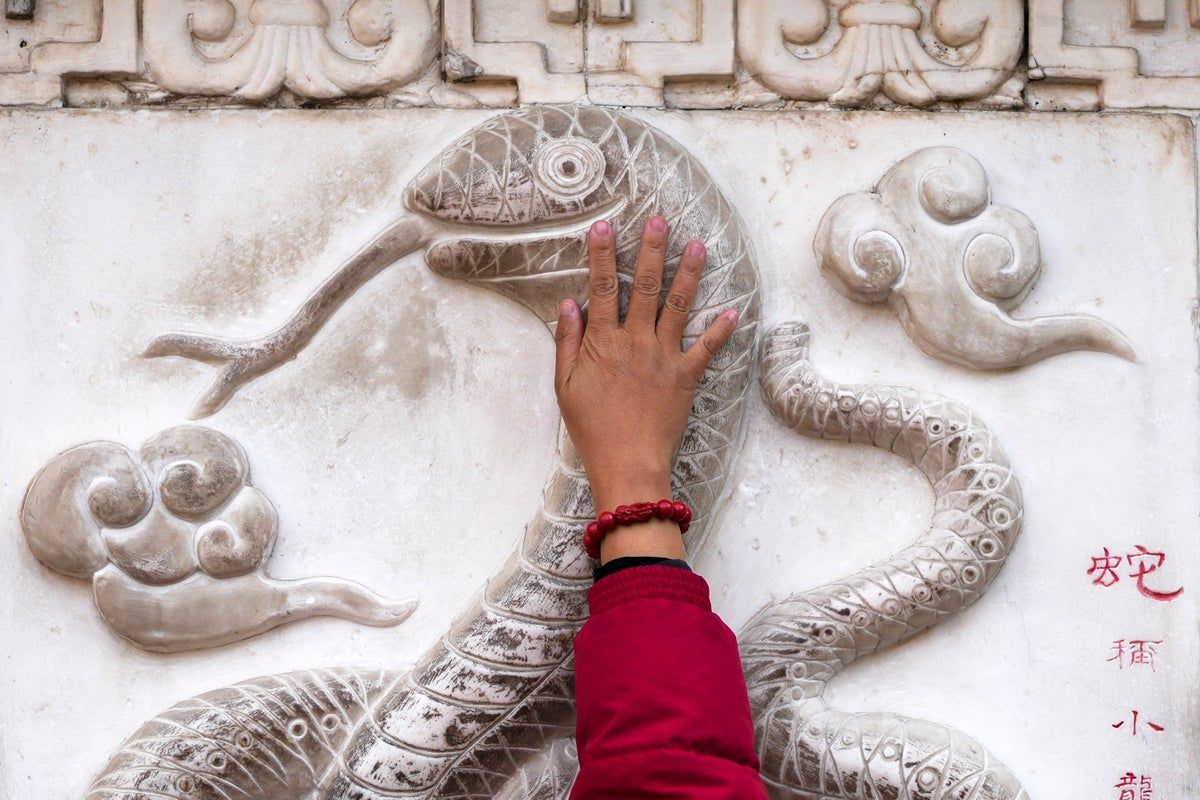Your support helps us tell the story
From reproductive rights to climate change to the great technology, The Independent is in the field when history is being developed. Whether it is investigating the Finance of the PAC PRO-TRUMP of Elon Musk or produces our last documentary, 'The Aa Word', which shines to a light on US women who fight for reproductive rights, we know how important it is to analyze the facts of the acts of the messaging.
In such a critical moment in the history of the United States, we need reporters in the field. His donation allows us to continue sending journalists to speak on both sides of history.
Americans trust Independiente throughout the political spectrum. And unlike many other quality media, we chose not to block Americans from our reports and analysis with payment walls. We believe that quality journalism should be available for everyone, paid by those who can pay it.
Your support makes all the difference.
As the Chinese New Year begins, it is a perfect time to reflect on what it holds next year.
The Lunar New Year, also known as Chinese New Year or Spring Festival, is a significant cultural celebration that marks the beginning of the lunisolar calendar.
With the roots tracking about 3,500 years to ancient China, it means the end of winter and the arrival of a new year. The festival has a deep importance in Chinese culture and is observed with various traditions and festivities.
The party, the largest in China, this year falls between January 28 and February 4 and marks the arrival of the year of the snake.
The last year of the snake occurred in 2013.
Why is the year of the snake?
2025 is the year of the snake according to the Chinese Zodiac calendar, a 12 -year cycle represented by animals.
Every year it is associated with a specific animal, influencing the characteristics of those born under its sign.
Babies born in 2025 will be snakes, after 2024 dragons and the previous 2026 horses.
The cycle continues with the rat, the ox, the tiger, the rabbit, the dragon, the snake, the horse, the goat, the monkey, the rooster, the dog and the pig, each representing a different year in the repeated sequence 12 years.
How do I discover which animal represents the year I was born?
Snake (1929, 1941, 1953, 1965, 1977, 1989, 2001, 2013, 2025)
Rooster (1921, 1933, 1945, 1957, 1969, 1981, 1993, 2005, 2017)
PIG (1923, 1935, 1947, 1959, 1971, 1983, 1995, 2007, 2019)
Rat (1924, 1936, 1948, 1960, 1972, 1984, 1996, 2008, 2020)
Monkey (1956, 1968, 1980, 1992, 2004, 2016)
Horse (1954, 1966, 1978, 1990, 2002, 2014, 2026)
Goat (1955, 1967, 1979, 1991, 2003, 2015)
Tiger (1950, 1962, 1974, 1986, 1998, 2010, 2022)
OX (1949, 1961, 1973, 1985, 1997, 2009, 2021)
Dragon (1952, 1964, 1976, 1988, 2000, 2012, 2024)
Rabbit (1951, 1963, 1975, 1987, 1999, 2011, 2023)
Dog (1958, 1970, 1982, 1994, 2006, 2018)
Chinese astrologers believe that each sign experiences the influences of the year differently, with some established for prosperity and others who face warning stories.
Read more
How is the lunar new year celebrated worldwide?
- The New Year Lunar, held by many Asian communities, begins on January 29, 2025, marking the year of the snake in the Chinese Zodiac.
- The festivities include carnivals, family gatherings, parades, traditional meals and fireworks, which are often extended for several days.
- The New Year Lunar, also known as the Spring Festival (China), Tet (Vietnam) and Seollal (Korea), is linked to the lunar calendar and falls between the end of January and mid -February.
- The year of the snake symbolizes the Renaissance, regeneration and the search for love and happiness, although snakes have the feared and venerated status in Chinese culture.
- Celebrations often involve red, symbolic decorations of good fortune and special foods such as meatballs, rice cakes and noodles, which vary according to culture. The worship of ancestors and specific rituals are also common practices.
- Read more here
What traditions are associated with the Chinese New Year?
New Year Lunar is more than a celebration; It is a vibrant tapestry of cultural heritage, which joins families and communities in a spirit of renewal and hope.
From the meticulous cleaning of houses (Chucheng) to banish bad luck, to the explosion of the lucky ones: flashlights, intricate paper cuts and spring couples (Chunlian) that adorn each door, the tradition carries the center of the stage.
The delivery of red envelopes (Hongbao) and sharing auspicious meals further strengthens family ties, marking a moment of optimism for the following year.
These traditional customs underline the deep cultural significance of the festival, offering a new beginning and a shared sense of belonging.
What symbolizes the snake in Chinese culture?
In Chinese literature and mythology, the snake occupies a fascinatingly contradictory position.
While it is associated with Yin (darkness, humidity and femininity, their negative connotations often link poisonous snakes with seductive women and Yang drain.
On the contrary, the snake also embodies a positive symbolism. Called “Little Dragons”, its shed skin, the “dragon coat” means good luck, rebirth and regity.
This duality extends to the representation of the love and happiness of the snake, as shown in “the legend of the white snake”, and its association with wealth, wisdom and longevity, often grouped with the turtle and the turtle crane.












